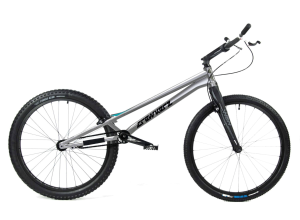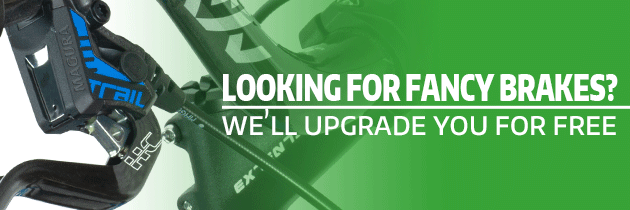Bleeding Magura brakes causes many people (and bike shops) a lot of trouble. It doesn't have to be that way! While indeed many steps need to be taken for effective brake bleeding, methodically ticking them off a to-do list should ensure proper air evacuation from the system. In the video, we use the Magura service kit, but any kit dedicated to this type of brake will be suitable.
The detailed procedure is described in the video; below is a condensed list of actions to take:
- Remove the caliper so that it can be freely maneuvered and can be lifted higher than the lever, and secure the bike. The lever should be adjustable at an angle of 10* - 45*.
- Set the lever at a 10-degree angle and open the bleed valve.
- Place the open syringe in the bleed valve.
- Remove the brake pads and insert the piston lock into the caliper.
- Lift the caliper higher than the lever, open the bleed valve and attach a syringe with 20ml of fluid to the caliper. Tighten with an 8mm wrench.
- Lower the caliper, pump the fluid into the lever. After pumping 10ml of fluid, slowly press the lever and release.
- Draw the fluid from the syringe at the lever into the syringe at the caliper.
- Again, pump fluid into the lever. After pumping another 10ml, change the lever's position to 45 degrees. Pump the remaining fluid, tilting the lever left and right, pressing the handle.
- Draw the fluid from the syringe at the lever into the syringe at the caliper.
- Pump a few ml of fluid into the lever, slowly pressing and releasing the handle.
- Lift the caliper a few cm higher than the lever.
- Detach the syringe and screw in the bleed valve when the fluid level is a few mm below the top. This should be performed quickly as the level of fluid will drop in the caliper. To raise it, hold the caliper below the lever.
- Drain the fluid from the syringe at the lever by tilting it forward.
- Remove the syringe.
- Screw in the bleed valve and tighten to 0.5Nm.
For effective bleeding, it is essential to correctly operate the lever and caliper position. These crucial details are described in the video.
Common mistakes during bleeding:
- Improper locking of the pistons in the caliper.
- Incorrect positioning of the lever and caliper during bleeding.
- Emptying the syringe and drawing air into the system.
- Bleeding too quickly.




















